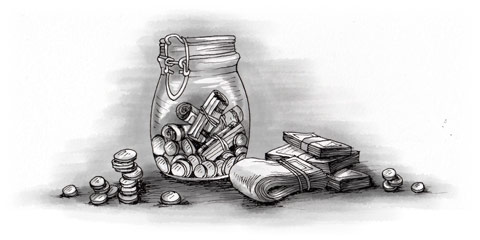Currency
The currency used in Colombia is the Colombian Peso, the currency code is COP and the currency symbol is $. According to the XE currency ranking , the most popular Colombian Peso exchange rate is the COP to USD rate.
Inflation is currently at 1.91 percent, as recorded in March 2013 and can be viewed for updates here . The inflation rate is considerably low when considering that in 1977 inflation reached 41.65 percent.
The coins used are $5, $10, $20, $50, $100, $200, $500, and $1000. Banknotes are split into $1000, $2000, $5000, $10,000, $20,000, and $50,000. For more information about Colombia’s currency or economic updates you can visit the Central Bank of Colombia website.
The black stuff
Many people may associate Colombia with its unofficial export, cocaine. In fact, oil, coal and coffee (the black stuff) are actually Colombia’s major exports.
For now, oil is the biggest export and coffee comes in second place. In February 2013, the coal and coffee industries were affected by protests and strikes. Coal workers went on strike due to demands for higher wages which has stopped nearly 70% of the coal industry. Other coal miners have stopped working in protest because of American company Drummond dumped hundreds of tons of coal on Colombia’s Caribbean coast in January 2013.
There are more than 500,000 families that grow coffee beans and their trade has also been affected due to a plant disease which slashed their wages sharply. There has also been a drop in the World Coffee Price because of the strong peso. Coffee farmers have gone on strike demanding a change in how the National Federation of Coffee-Growers, which buys the majority of Colombia’s coffee, is managed. “Today, to produce one arroba (a 25lb or 11.3kg bag) costs the coffee grower 70,000 pesos ($38.6) and he gets paid 49,000 pesos for it.
The current mining boom has boosted the economy significantly and the government has put important reforms in place such as a credible inflation targeting regime, strong bank supervision and consolidation of public finances.
Investment potential
Colombia has the third largest GDP in South America ($322 billion in 2011) and a free market economy. Foreign investors see potential in Colombia’s rising economy and have invested in its industries, namely oil. Colombia is definitely an economy to watch out for, some economists have included Colombia in CIVETS, which classifies Colombia, Indonesia, Vietnam, Egypt and South Africa as leading emerging economies.
The major economic issue in Colombia is poverty mostly because of widespread unemployment. Labour market reforms are in desperate need to boost job creation to help reduce widespread poverty and inequality in the country.

